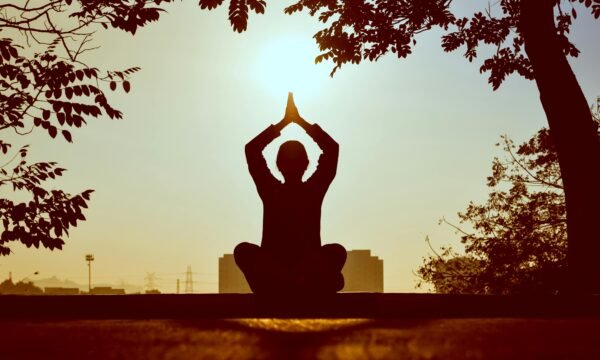This series was originally shared with subscribers to the FITaspire email newsletter. If you’d like content like this in your inbox every week, you can sign up here with any free resource you choose here.
What are the 8 Limbs of Yoga?
The 8 Limbs come from an ancient Indian philosophical text called ‘The Yoga Sutras of Patanjali’. Each limb is a different aspect of yoga practice – which is why you hear me (and many others) say that yoga is way more than practicing poses.
To get us started, let’s look at what the 8 Limbs of Yoga are:
- 1. Yamas
- 2. Niyamas
- 3. Asana
- 4. Pranayama
- 5. Pratyahara
- 6. Dharana
- 7. Dhyana
- 8. Samadhi
- There is so much richness and depth in each of these, so we’ll really be skimming the surface in this series. But I hope you’ll find it helpful to start to understand a bit of each and how they work together. If you want to go deeper, make sure you’re on the waitlist for the next FITaspire Yoga Accelerator.

The Yamas: An Overview
The Yamas focus on how we interact with the world. The yamas are a collection of 5 aspects, which apply both on and off the mat. They enable us to be more authentic.
1. Ahimsa (or non-violence). This applies to how we treat others, ourselves, and nature. Translating to non-violence or non-harming, this is intended to reflect in all areas of life – in our thoughts, words, and actions. Not just violent action.
2. Satya (or truthfulness). Beyond just telling the truth, consider your thoughts, emotions, and moods. As all yamas should be considered together, you’ll want to think about the motives behind the truth you share – are you keeping ahimsa when you practice satya?
3. Asteya (or non-stealing). This is a broad and challenging one to consider – not stealing things that don’t belong to you, but also considering anything that is not offered freely: time, thoughts, energy, emotions, and ideas.
4. Brahmacharya (or moderation/right use of energy). The literal meaning of is “moving into infinity”: “Brahma” means infinity, the Absolute, or big; “charya” means to move or to walk, to live. Bringing these together, this is moving beyond small attachments and focusing more on bigger things (for me, I see this as God). This has also been seen as chastity in some yoga traditions and histories.
5. Aparigraha (non-greed). Freedom from greed or not taking more than is needed. This is often understood to include non-acceptance (including gifts) and non-accumulation– which would lead to an attitude of detachment.

Do you have to subscribe to all of these to be a yogi?
I would say no. Take what serves you and leave the rest.
However, I do think we should all take the time to understand the Yamas (and all 8 Limbs) to honor the lineage, the history, of yoga. And as you learn more about these principles, you may find that there is wisdom in each that can contribute to improving our interactions with others (and the world).
I personally find the Yamas align well with my personal beliefs and values, As you learn about each, consider how each aspect interacts with the others. They aren’t intended to be practiced one at a time, but as a set of principles in balance with each other..




